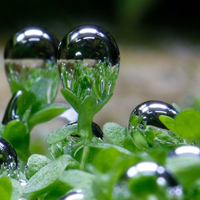Login
Subscribebrain organoids

Time Traveling Mini-Brains on a Mission to Conquer Space
Iris Kulbatski, PhD | Jun 1, 2023 | 5 min read
Alysson Muotri launched brain organoids into outer space and found that microgravity enriches our understanding of brain development and disease.

Major Advances in Mini Brain Bioengineering
The Scientist | Mar 31, 2023 | 1 min read
Explore the latest developments in brain organoid production.

Smart Gateways into the Lab of the Future
The Scientist | 2 min read
Neurobiologists, computer scientists, and engineers join forces to grow mini brains using automation and make their technologies smarter with artificial intelligence.

Human Brain Organoids Transplanted Into Rats Respond to Visual Stimuli
Katherine Irving | Feb 3, 2023 | 3 min read
The organoids could one day be used to treat brain injuries in humans.

Researchers Transplant Human Neurons into Rat Brains
Katherine Irving | Oct 12, 2022 | 2 min read
The human cells, engineered to respond to blue light, influenced rat behavior when stimulated.

Science Philosophy in a Flash - A Rising Star Launches Brain Power into Outer Space
Iris Kulbatski, PhD | 1 min read
Alysson Muotri shares how tapping into his inner creative spark fuels his pursuit of science.

Mutation Linked to Difference Between Human and Neanderthal Brains
Dan Robitzski | Sep 9, 2022 | 5 min read
A single amino acid substitution in a protein causes increased neuron production in the frontal lobes of humans compared to Neanderthals—a tiny difference that could have given our species a cognitive edge, researchers say.

Time Traveling Mini-Brains on a Mission to Conquer Space
Iris Kulbatski, PhD | Aug 11, 2022 | 4 min read
Alysson R. Muotri discusses his launch of brain organoids into outer space and how microgravity enriches our understanding of brain development and disease.

The Scientist Speaks Podcast - Episode 7
The Scientist | 1 min read
Brains in the Palm of your Hand: 3D Organoid Cell Culture

Three Autism-Linked Genes Converge on Tweaks to Cells’ Timing
Angie Voyles Askham, Spectrum | Feb 3, 2022 | 3 min read
The genes are involved in pacing the development of inhibitory and excitatory neurons. An imbalance in these two types of signaling is thought to play a role in autism.

Human Stem Cell Research Guidelines Updated
Ruth Williams | May 26, 2021 | 5 min read
Removal of the 14-day limit for culturing human embryos is one of the main changes in the revised recommendations from the International Society for Stem Cell Research.

Gene-Edited Organoids Explore Neanderthal Brain Function
Jef Akst | Feb 12, 2021 | 3 min read
Using CRISPR to swap an archaic variant of the NOVA1 gene into human stem cells, researchers create organoids with neurodevelopmental differences from those carrying modern DNA.

Reduced Adult Neurogenesis Linked with Alzheimer’s Disease
Abby Olena, PhD | Feb 1, 2021 | 6 min read
Manipulating the production of new neurons can improve cognition in animal models of the disease, raising the possibility that figuring out a way for humans to make more neurons could make a difference for people with dementia.

New Screening Approach Reveals Novel Regulators of Microcephaly
Catherine Offord | Jan 1, 2021 | 2 min read
Researchers combine organoids, CRISPR-Cas9, and cellular barcoding technologies to identify genes that influence brain size.

The Many Model Systems of COVID-19
Abby Olena, PhD | Nov 4, 2020 | 7 min read
Researchers turn to familiar model animals, along with some fresh strategies, to develop countermeasures against SARS-CoV-2 and investigate the biology of infection.

Photos of the Year
Emily Makowski | Dec 26, 2019 | 2 min read
From bubbling plants to endangered whales, here are some amazing images from The Scientist in 2019.

Organoids Don’t Accurately Model Human Brain Development
Diana Kwon | Oct 23, 2019 | 5 min read
A new study suggests that growing in a stressful environment prevents “brains-in-a-dish” from growing in the same way as their in vivo counterparts.

Human Cortical Organoids Model Neuronal Networks
Abby Olena, PhD | Aug 29, 2019 | 4 min read
After growing in culture for a few months, the mini-brains produced rhythmic neural activity that strengthened over time.

As Brain Organoids Mature, Ethical Questions Arise
Ashley Yeager | Aug 1, 2018 | 6 min read
Inserting human “mini-brains” into rodents has the potential to broaden scientists’ understanding of neurological disease, but raises quandaries about consciousness.
